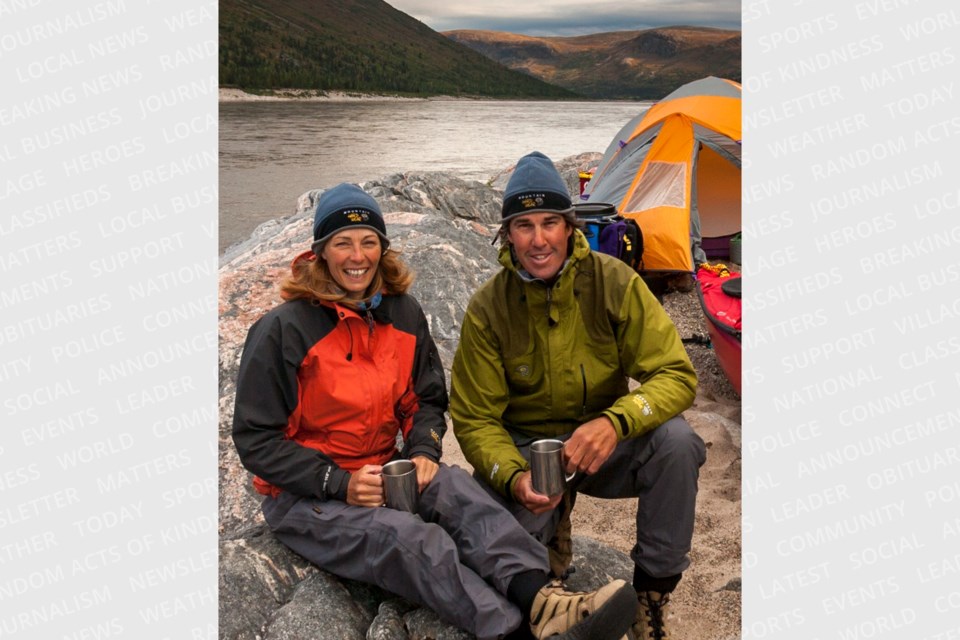For nearly two decades, Joanie and Gary McGuffin have worked tirelessly to protect area waters and help maintain a healthy watershed as part of the Lake Superior Watershed Conservancy.
Now, the Sault residents will be taking their years of experience to new heights as they prepare to carry out their roles as official advisors for an upcoming traveling exhibition with the Smithsonian Institution on the boreal forest – the planet’s largest terrestrial ecosystem.
The exhibition, called Knowing Nature: Stories of the Boreal Forest, opens this week at Michigan State University Museum in East Lansing, MI and will invite grade-school classes and the general public to learn about the biodiversity and global importance of the boreal through first-hand accounts.
Developed by the Smithsonian Institution Traveling Exhibition Service (SITES), the McGuffins have the honour of kicking off the long-awaited expo with the very first educational program of its five-year tour this Thursday.
“What ever contribution Gary and I can help make and excite young people and people in general about this forest is really exciting,” Joanie McGuffin says.
Nearly 40 years ago, the McGuffins set out on a journey to explore the boreal by canoe, and they have since paddled to practically every corner of the forest’s vast landscape, from Alaska and Lake Superior to Labrador and Nunavut.
Describing their expedition through the forest as an incredibly immersive and sensory-inducing experience, Joanie McGuffin says the impact of the boreal, along with the countless species and billions of songbirds living within it, cannot be ignored.
“The boreal affects all of us,” she says. “We all breathe in the air from the boreal. It makes twice as much oxygen for our planet than the rainforests do. But we often don’t think of the boreal as producing the air we breathe. It cleans the waters and does all these living processes that affect our lives every single day.”
In addition to being advisors for the exhibition, the McGuffins are also contributors to the project through Gary’s photography.
He has provided a collection of his own images taken from the north shore of Lake Superior – a body of water that has significant ties with the boreal.
“A big part of this exhibition is about the health of the boreal that surrounds Lake Superior – it’s like the greatest lake meets the greatest forest on earth,” she says. “These two stories are incredibly powerful about our care of water and forest and Indigenous worldview of the landscape.”
“It’s a super exciting connection to make.”
Because of their deep-rooted and personal experiences with the boreal, the McGuffins met with members of the Smithsonian Institution in Washington, D.C. back in 2010 to discuss the idea of creating an exhibition.
In 2019, the expo was formed under the guidance of Carol Bossert - the project manager for science at SITES.
“They didn’t want it to be an exhibition where you had to go to Washington, D.C. to experience it,” she says. “By making it a traveling exhibition, it can go to communities like our size in Sault Ste. Marie, which would be an amazing opportunity.”
“The Smithsonian is such a big institution, and to have them tell the story of the Boreal Forest is very significant, so we’re very excited to be a part of it.”
Hoping to connect with people in a moving way, McGuffin says a major part of the expo will be to highlight the importance of protecting and respecting the boreal on a climate level, as well as the hundreds of First Nations groups who are situated along its gigantic landscape.
“With the climate crisis we’re in, we really need to care for the boreal,” she says. “Because on a vast scale, it’s holding carbon in a plant form, and we don’t want these peatlands to dry out, and we don’t want the big fires that come about because of the heating climate and the drying waters.”
“We’re doing a lot of Indigenous-led work with the Lake Superior Watershed Conservancy, and I was super excited that through those voices across the Boreal, we can learn new ways of understanding this forest.”
According to a news release from the Smithsonian, the 2,500 square-foot exhibition will include a three-foot birchbark canoe model which showcases traditional canoe-building methods used by the Constance Lake First Nation.
The tour will also feature a pair of handmade snowshoes in the Cree pointed-toe style, as well as a pair of earrings made from birchbark and moose hide, and a canvas bag painted using natural dyes and decorations seen on caribou hunting coats.
Coming out of a pandemic that kept people inside for long stretches of time, Joanie McGuffin senses the public has a desire to reconnect with nature and discover the social and cultural benefits it can provide.
“We’re so blessed living here in Bawating and Sault Ste. Marie and around the Great Lakes where we have these health-giving places,” she says. “But our need to understand and appreciate them better is what we hope to keep exciting people about, so we can wake up with a feeling of promise and hope for the future, and not a feeling of despair.”
The McGuffins will lead the first educational tour this Thursday in East Lansing, MI for a group of Grade 4 and 5 students from Wexford Montessori School.
The exhibition will remain at the Michigan State University Museum until Nov. 12 before it travels to different venues across Canada and the U.S. over the next five years.
“We’re really hoping it moves around and we’re able to do more associated educational programming,” she says. “We’ll certainly be telling the story of the conservancy.”
That schedule is still undetermined, but McGuffin says there will be lots of viewing opportunities in both countries.
